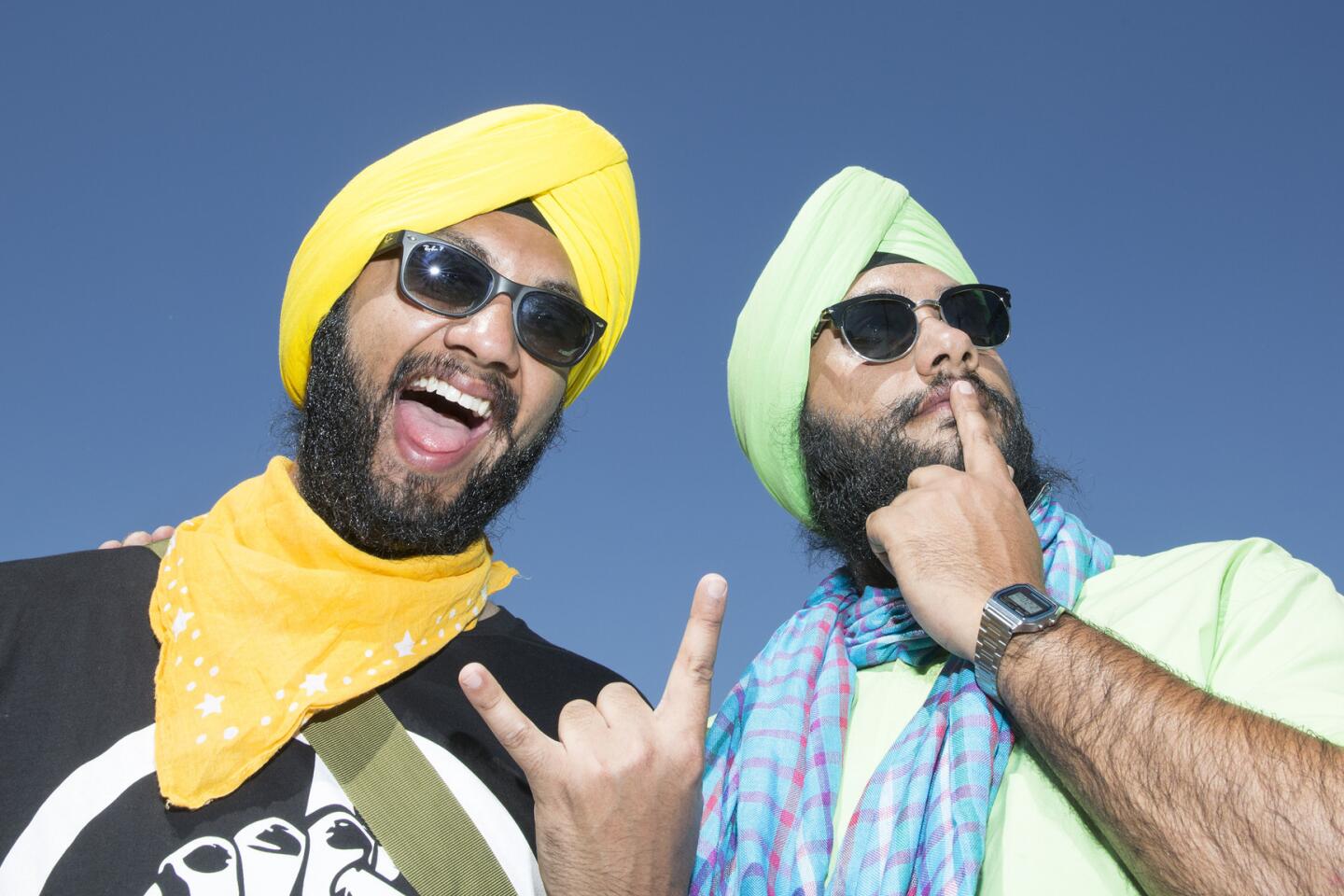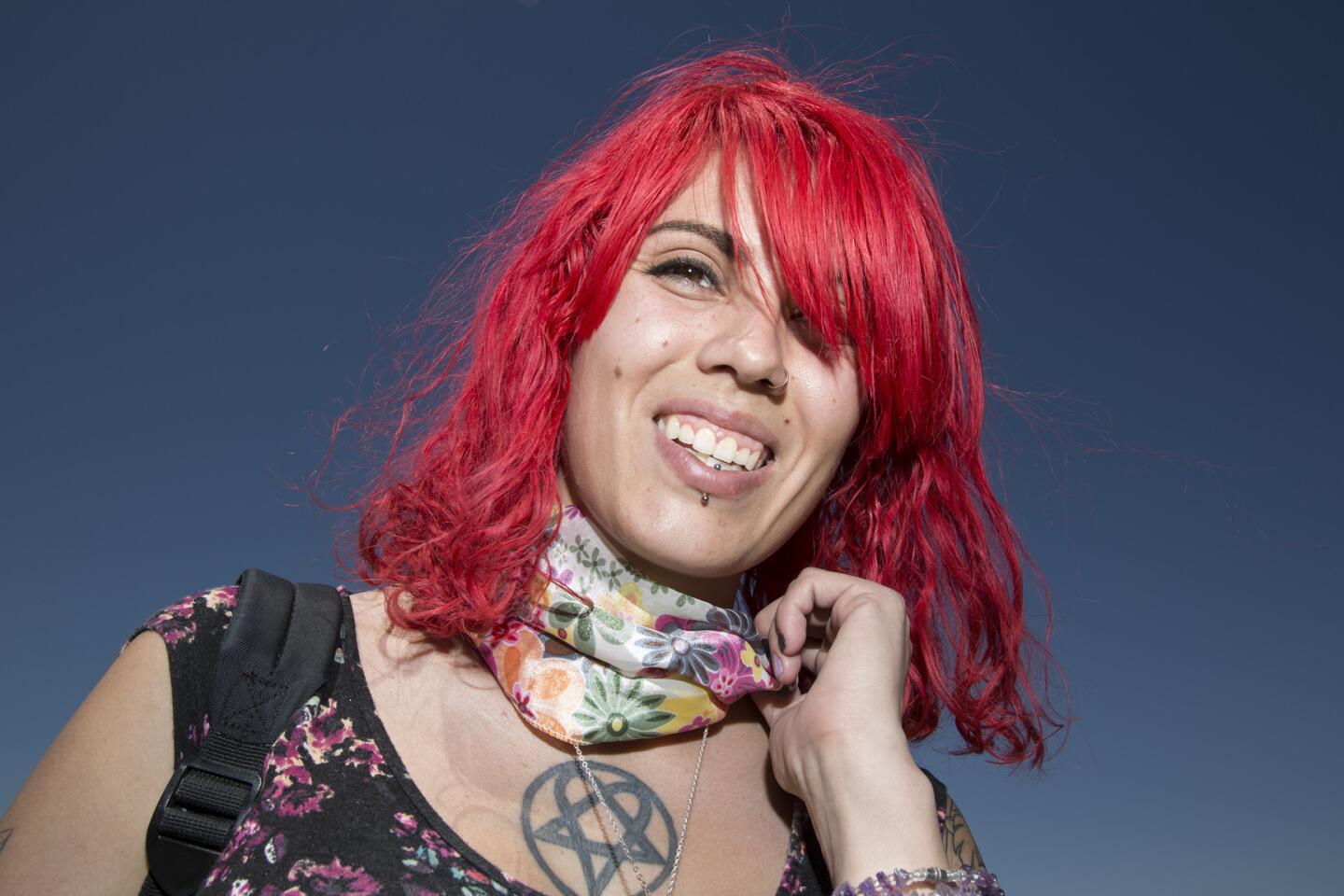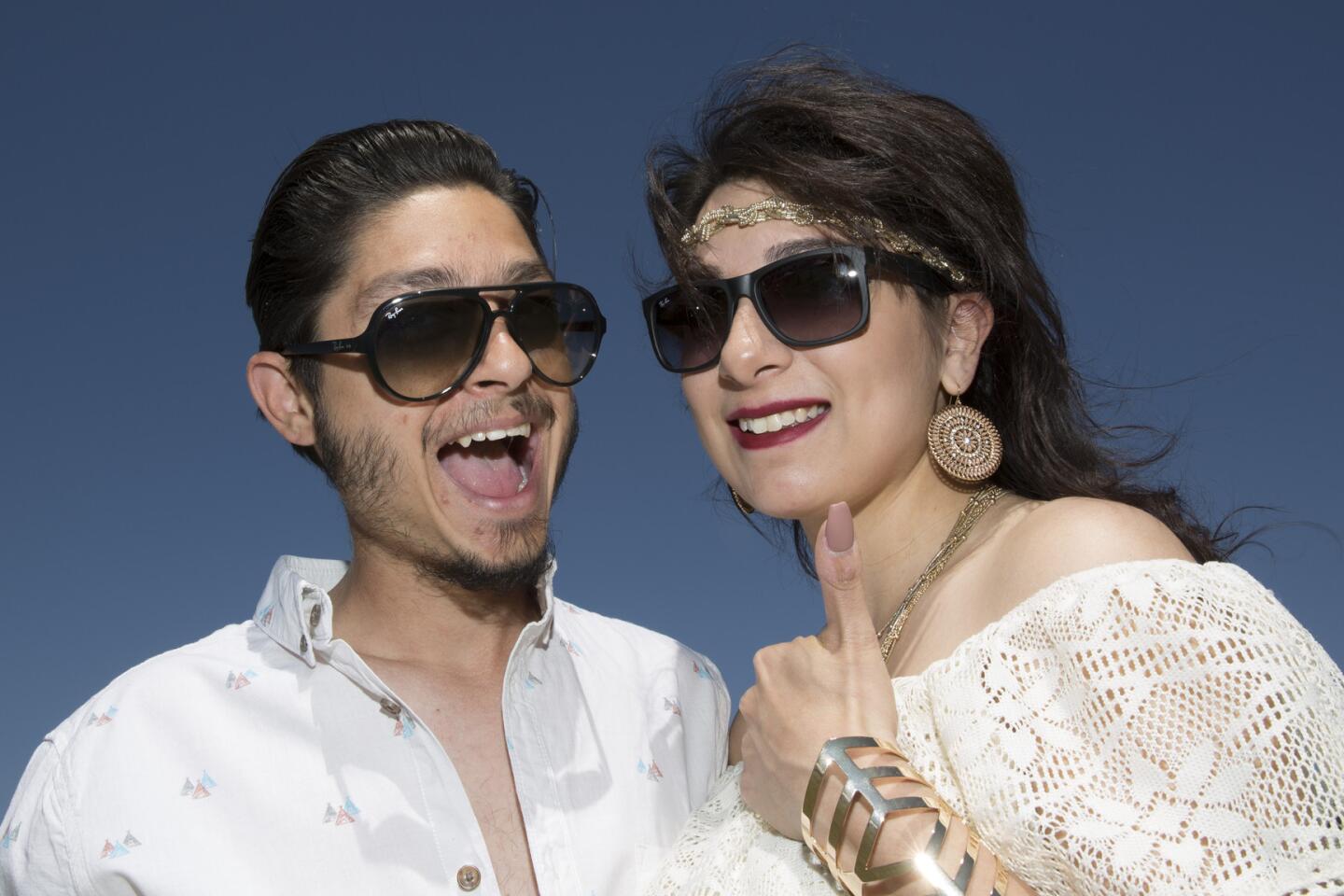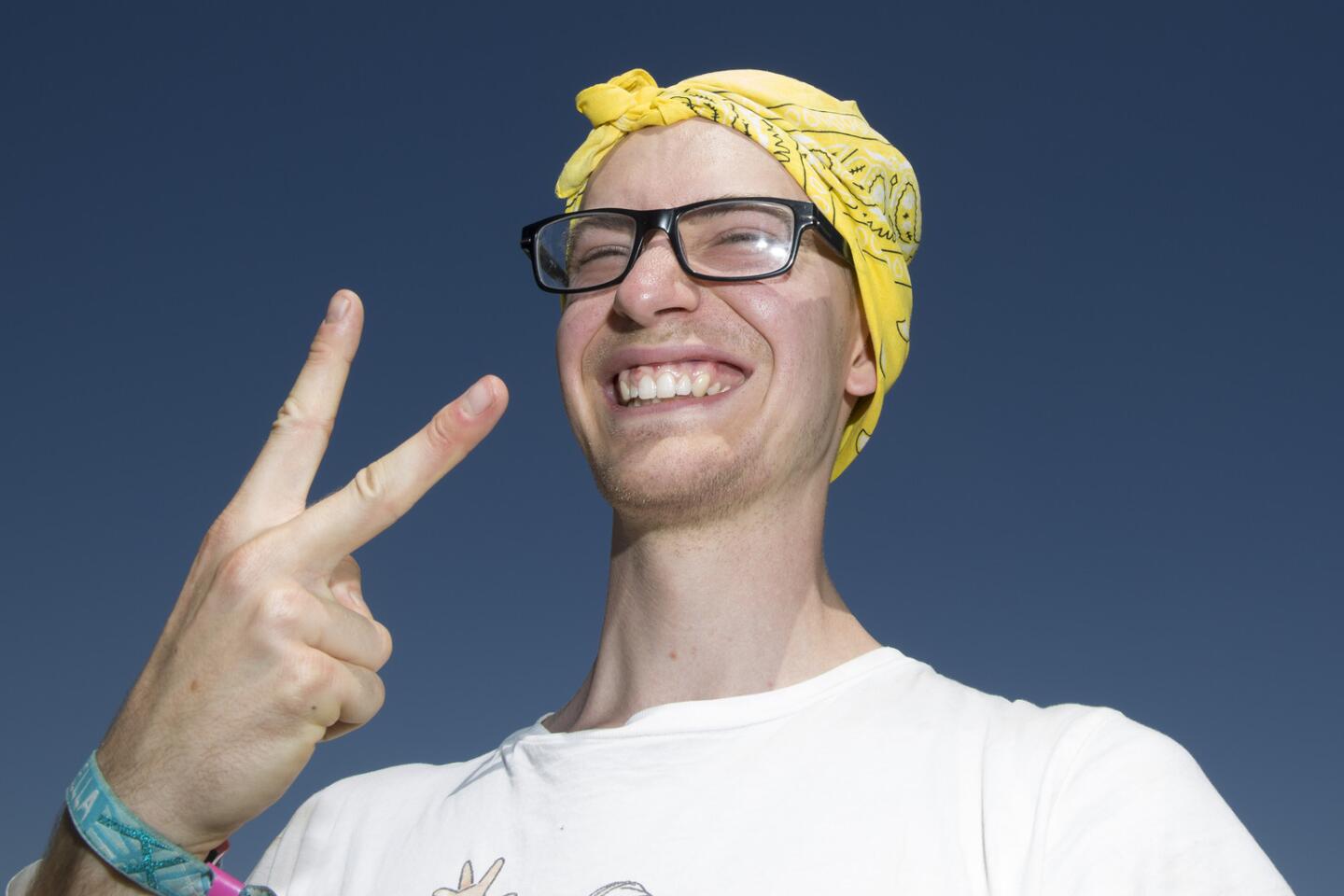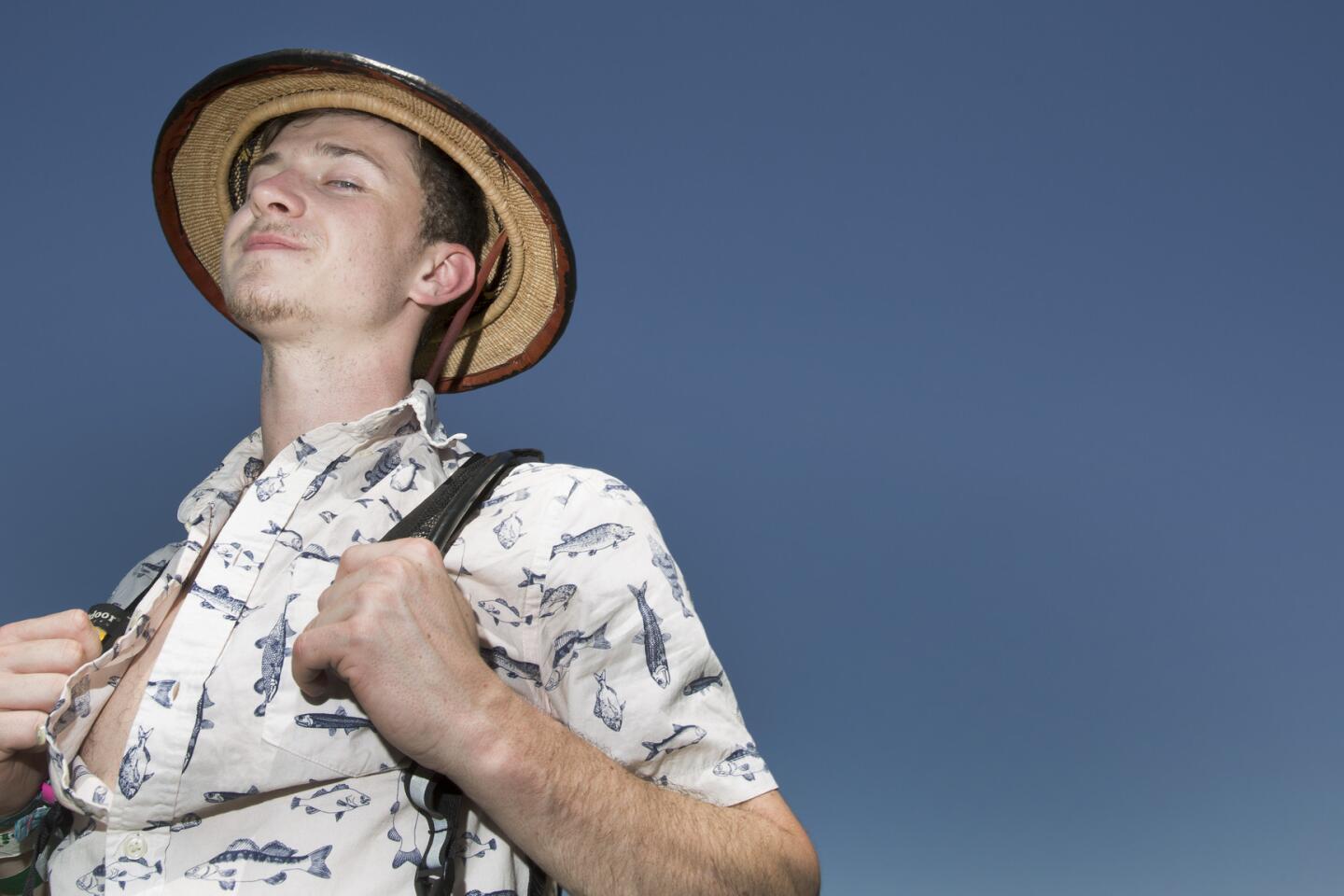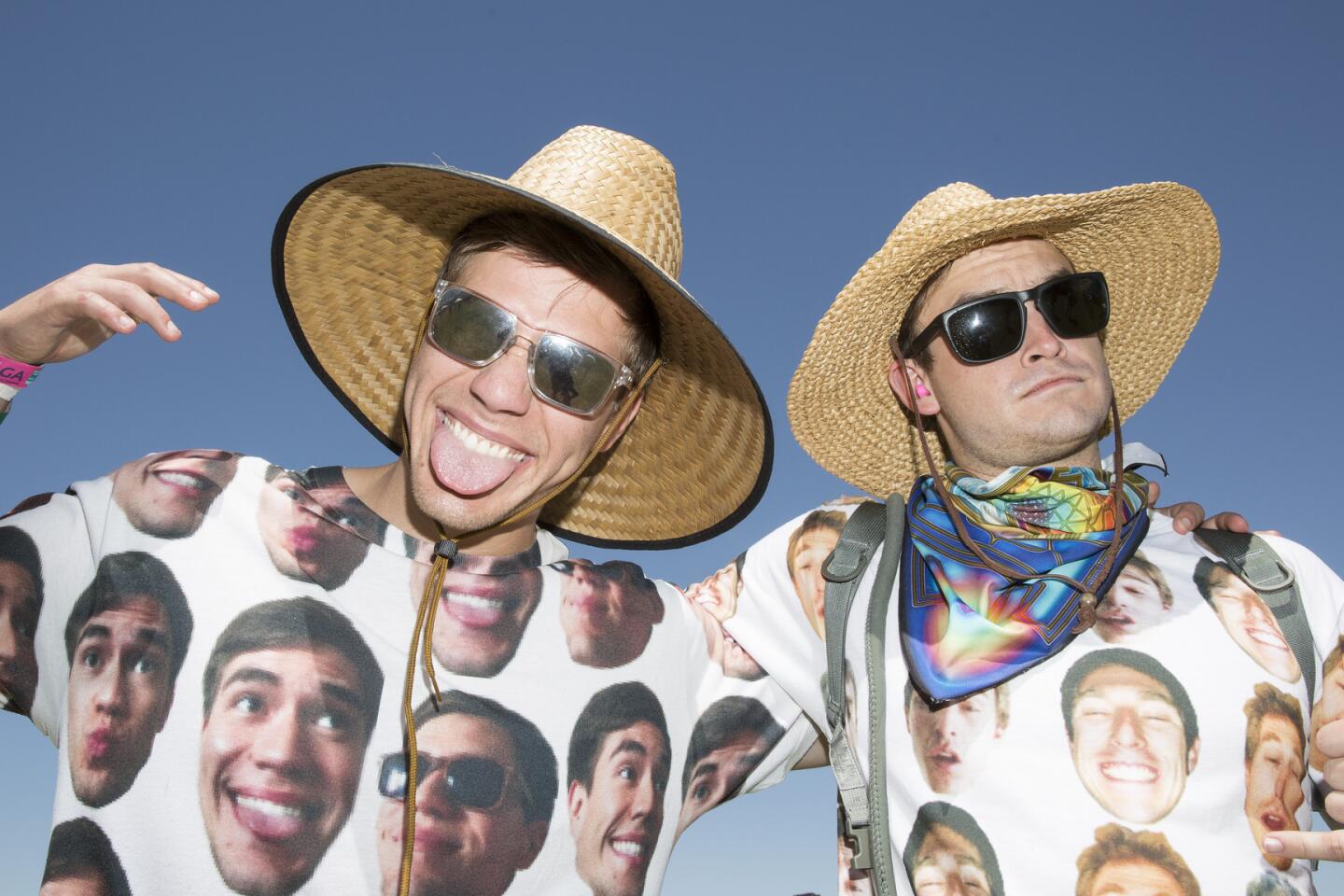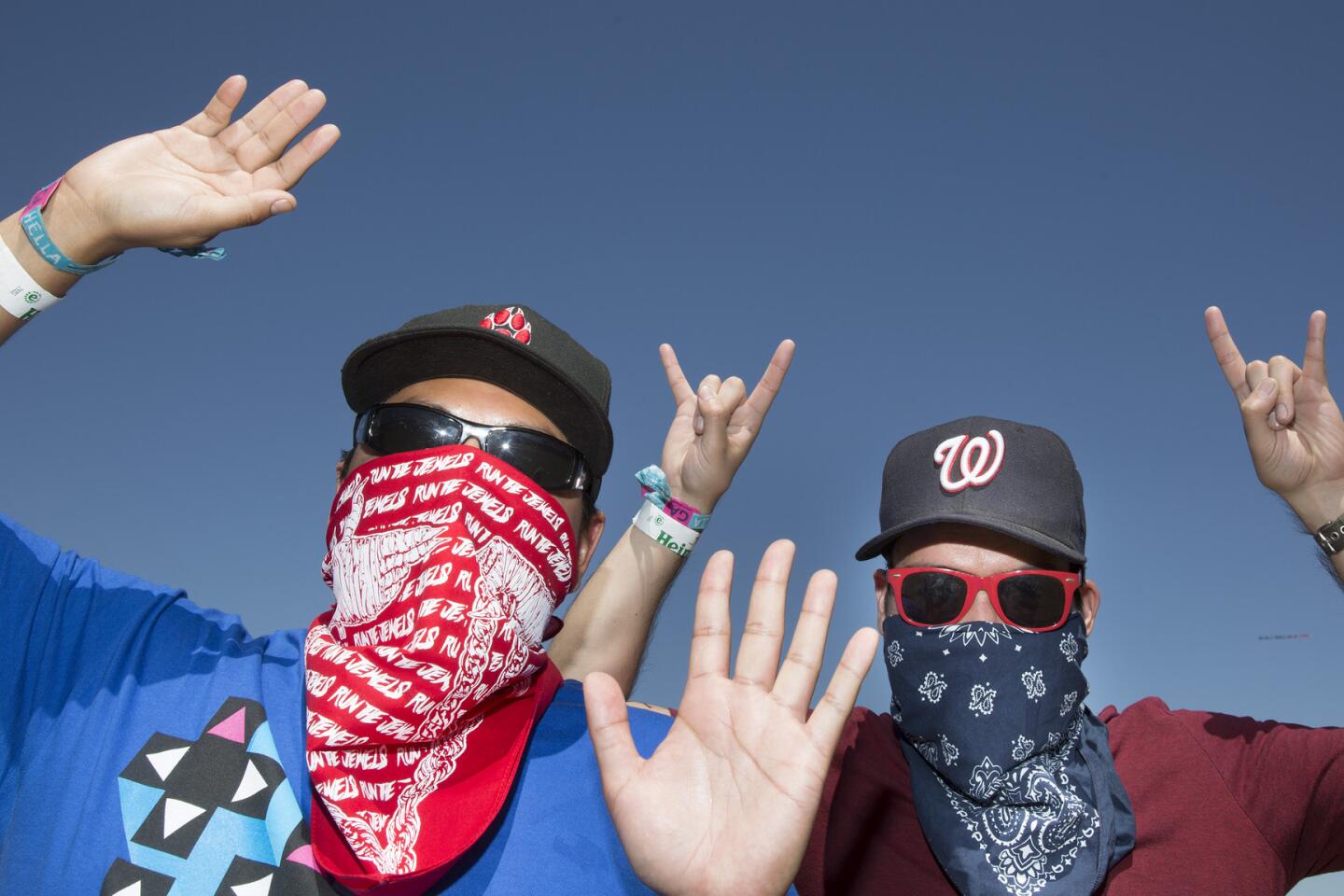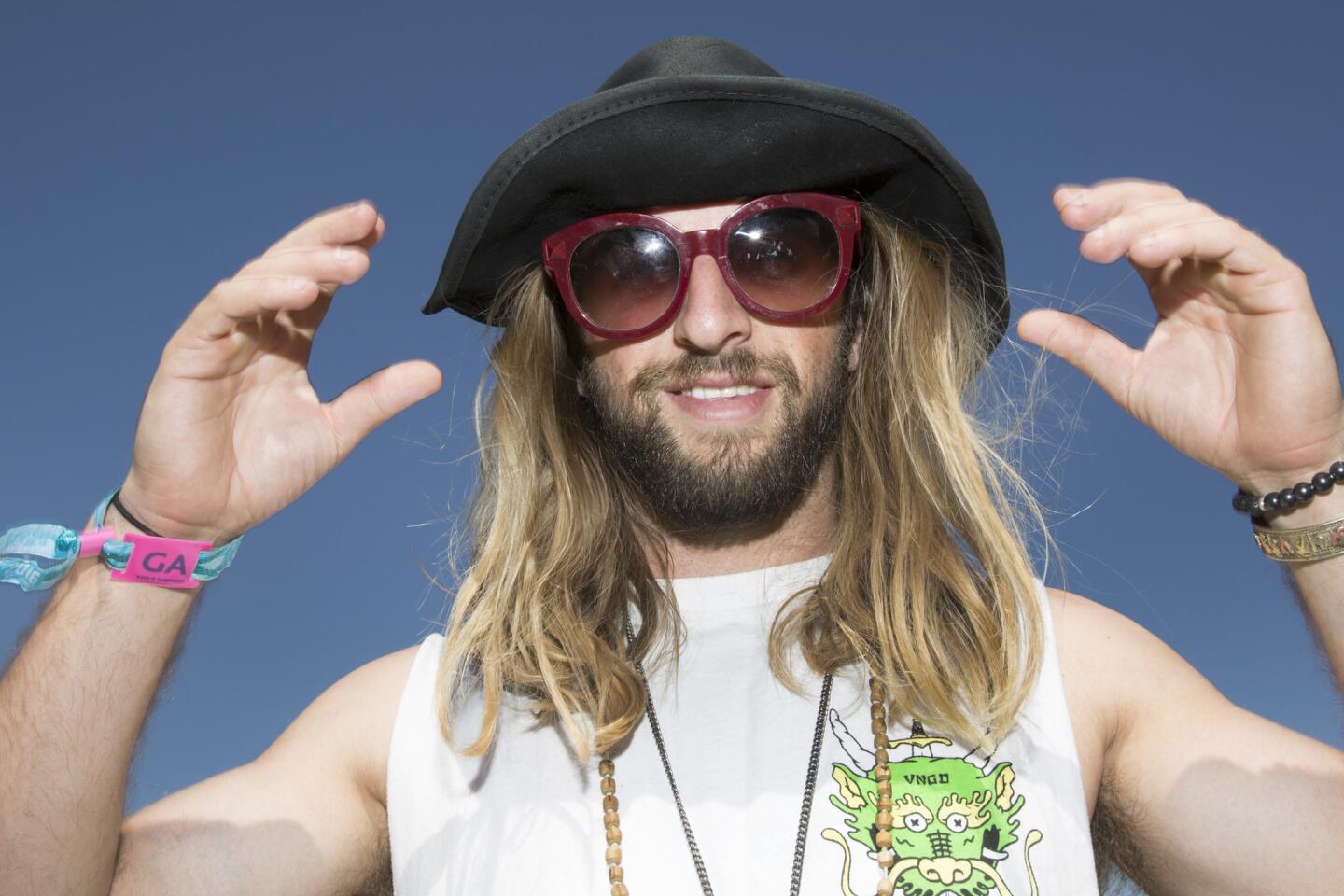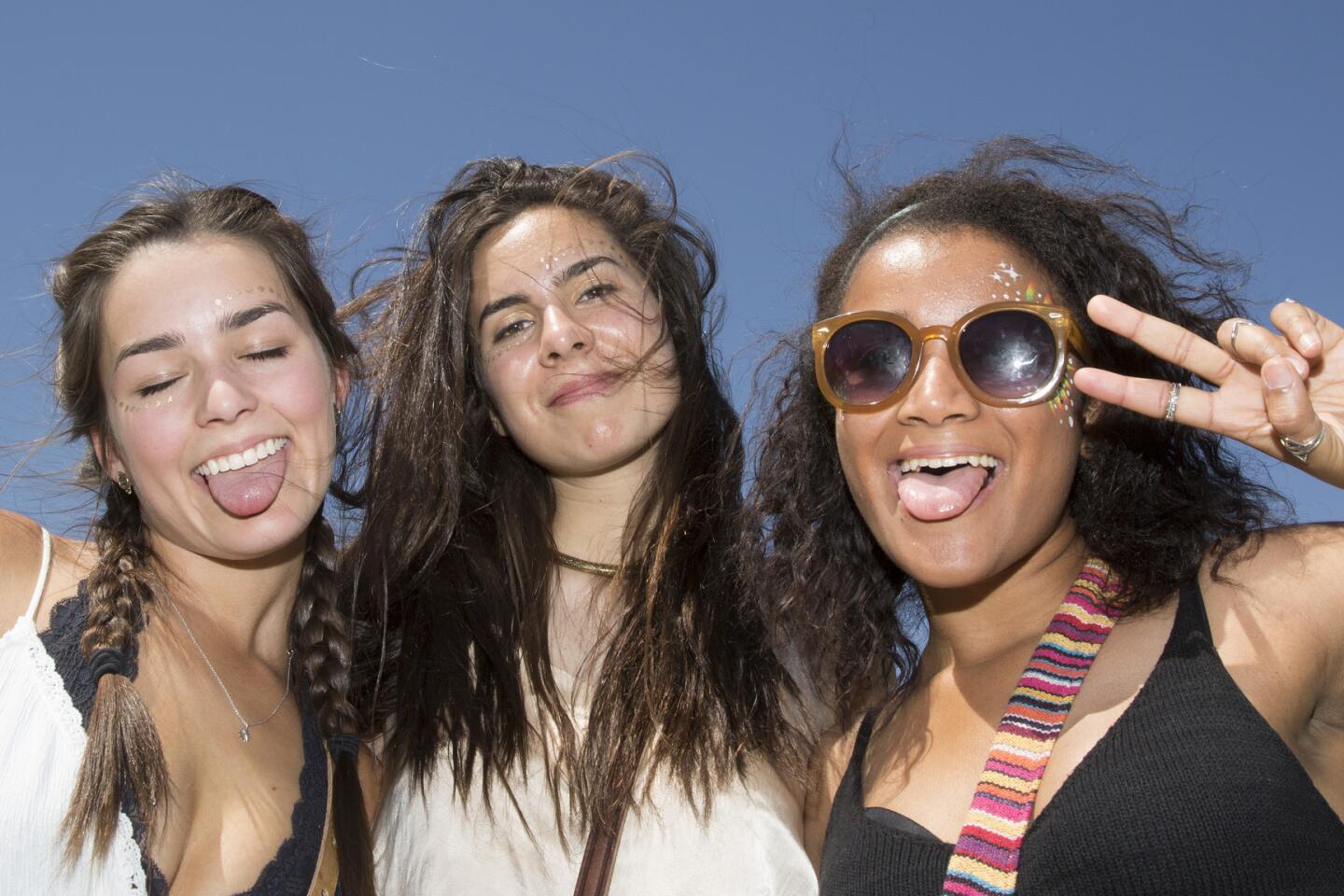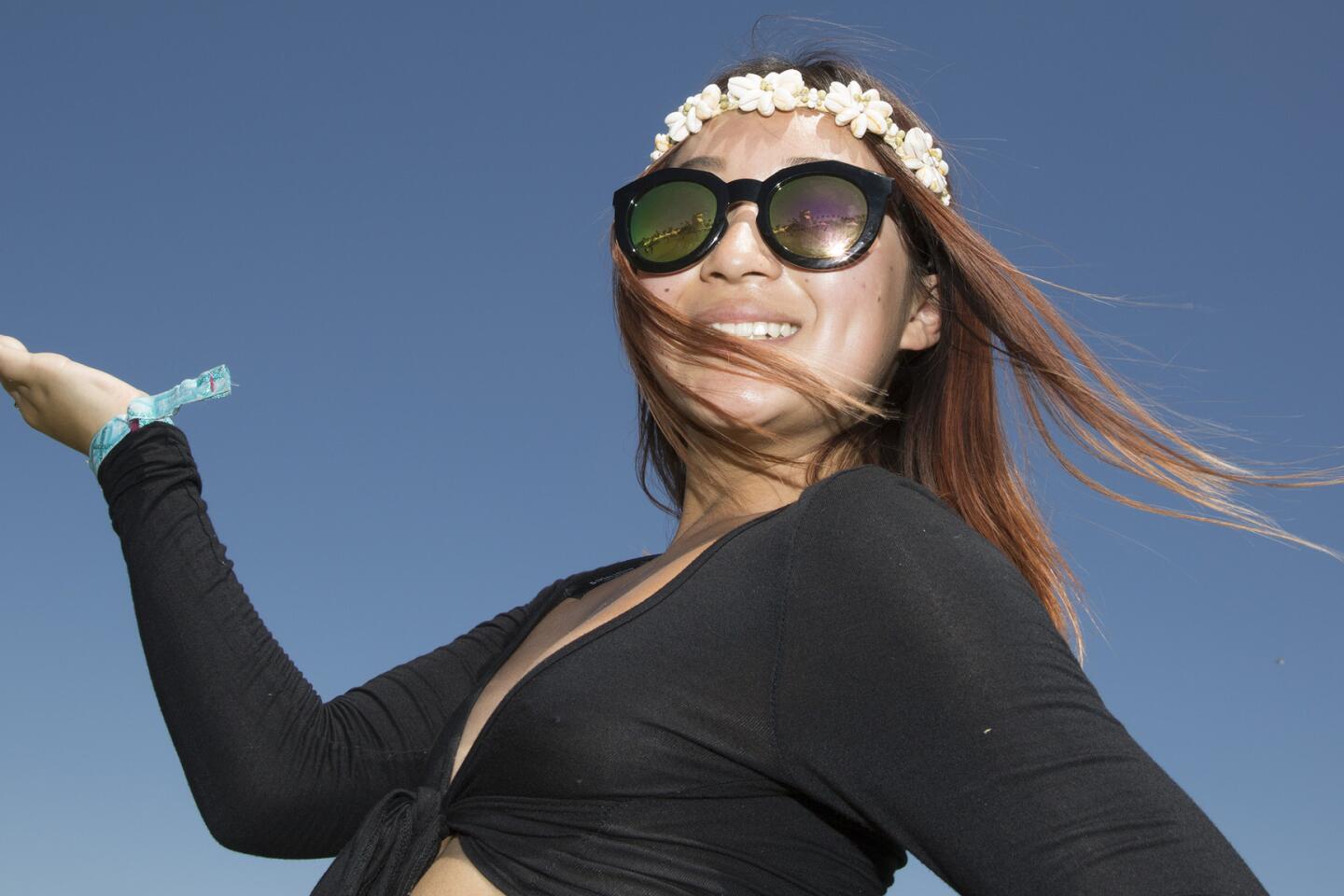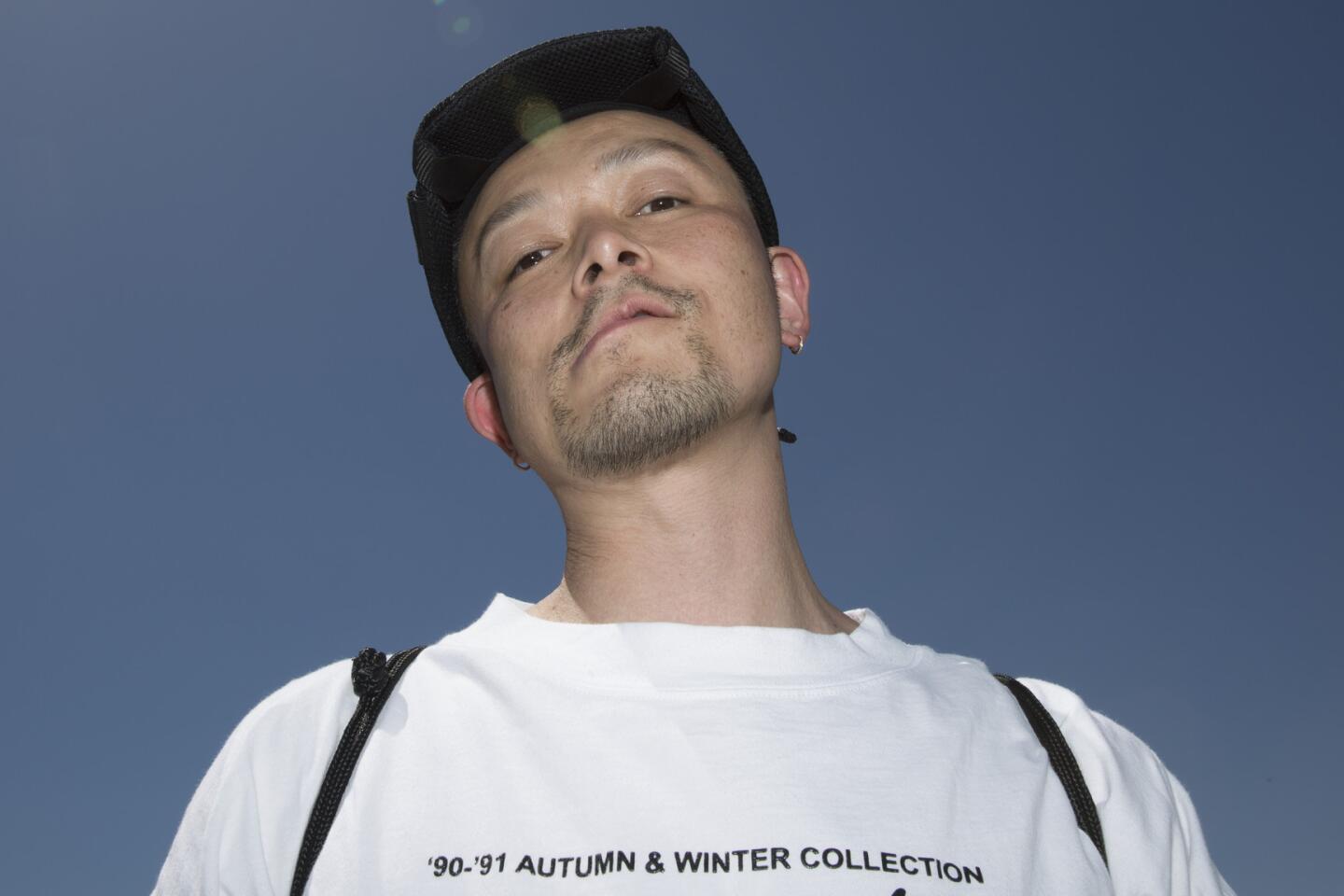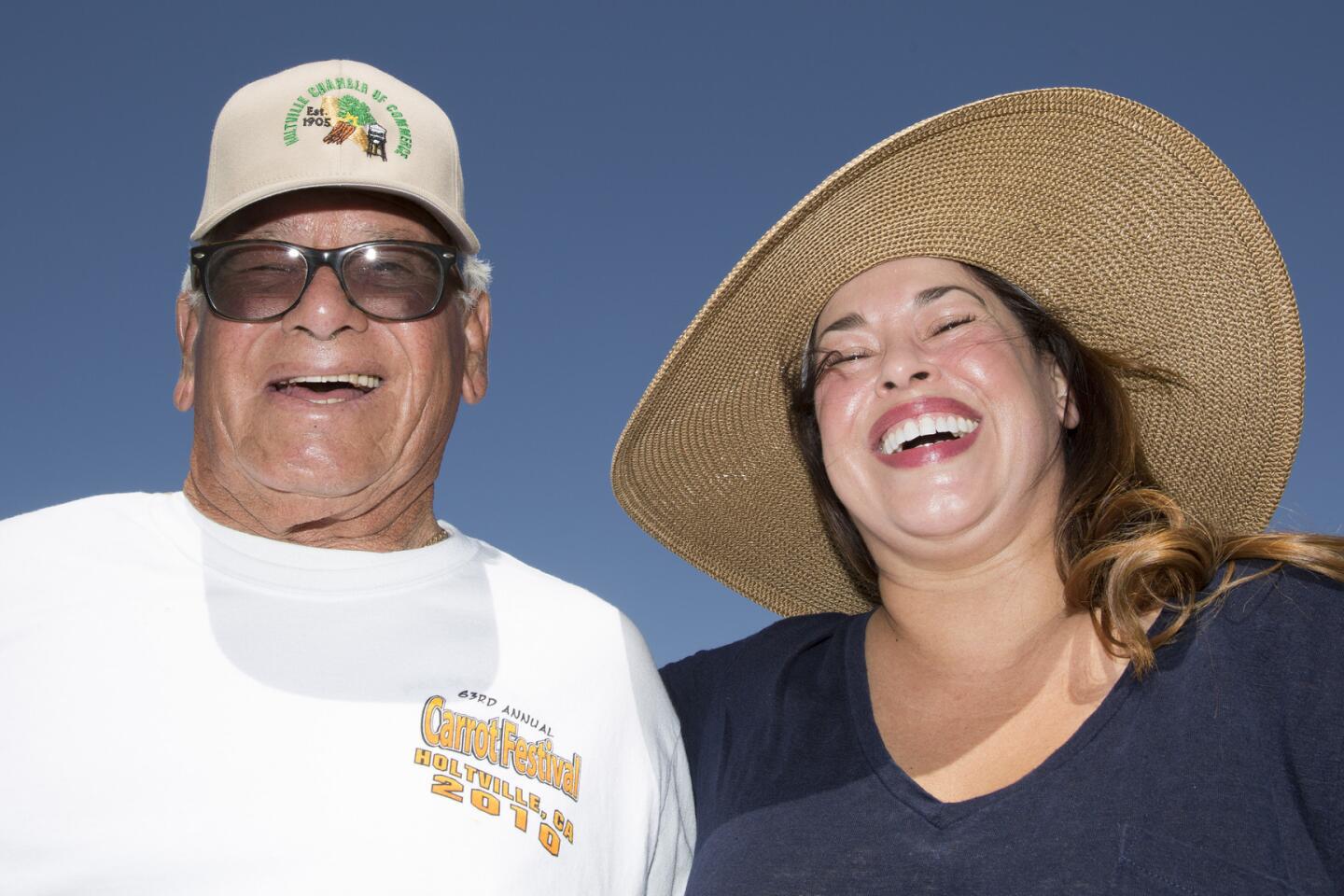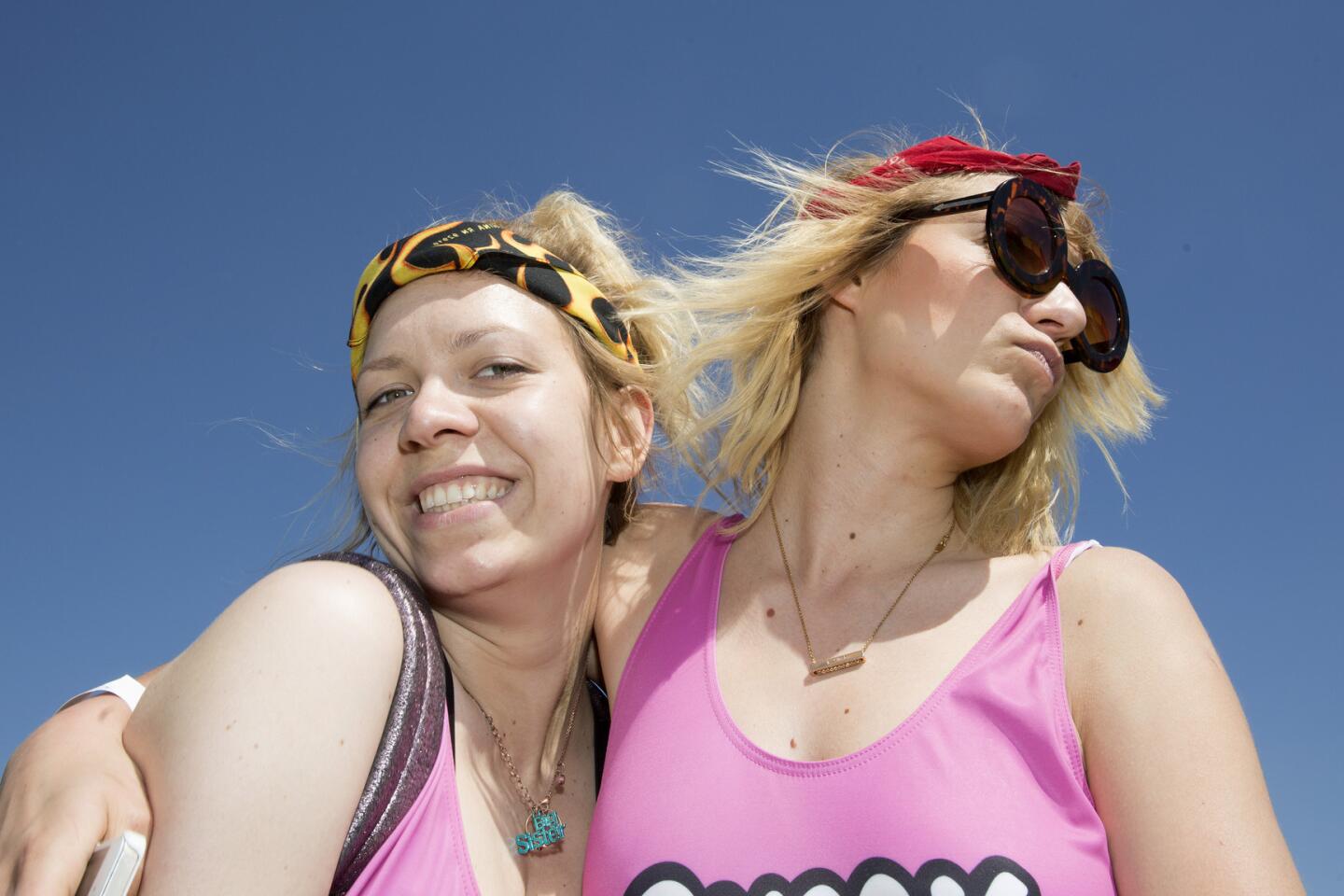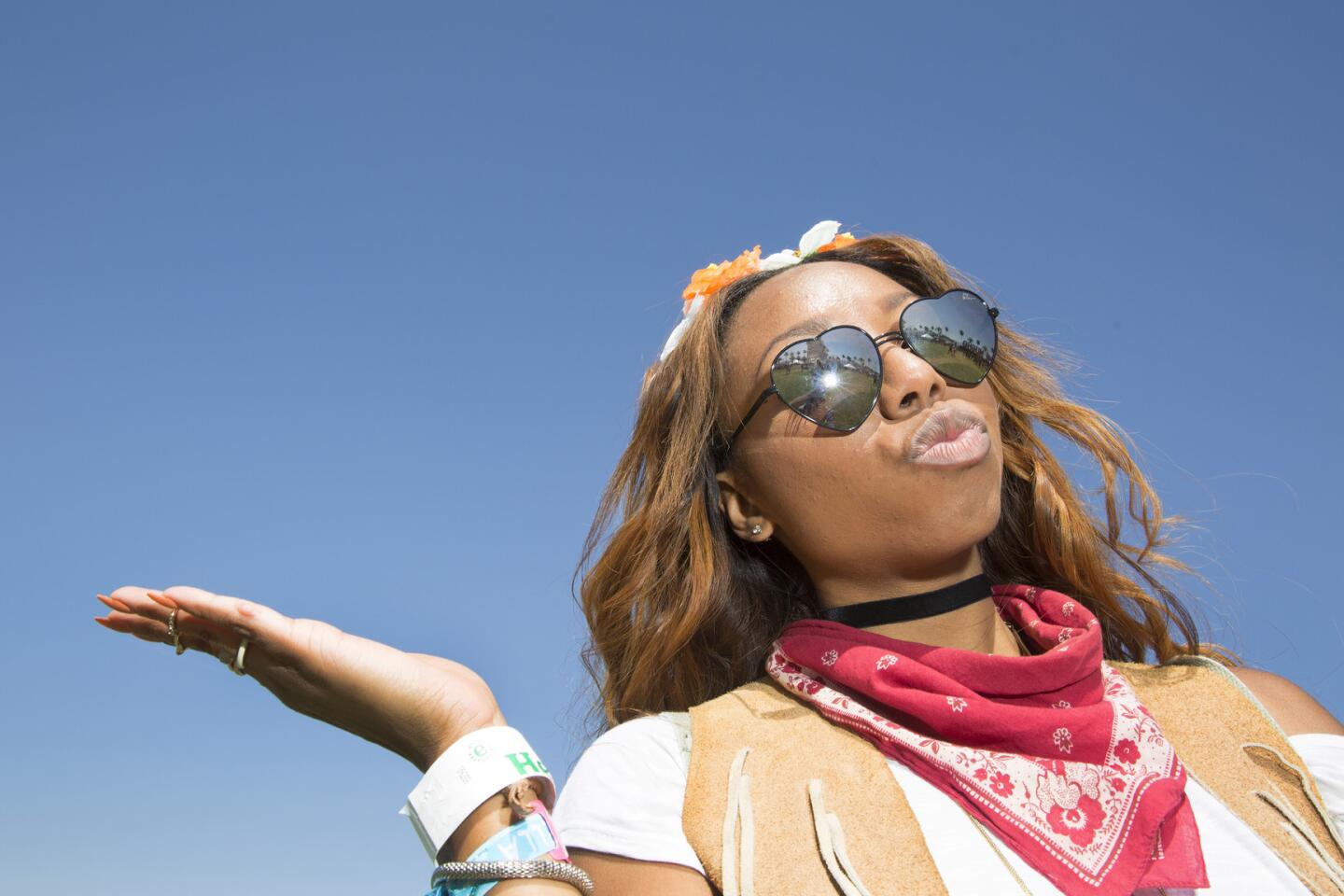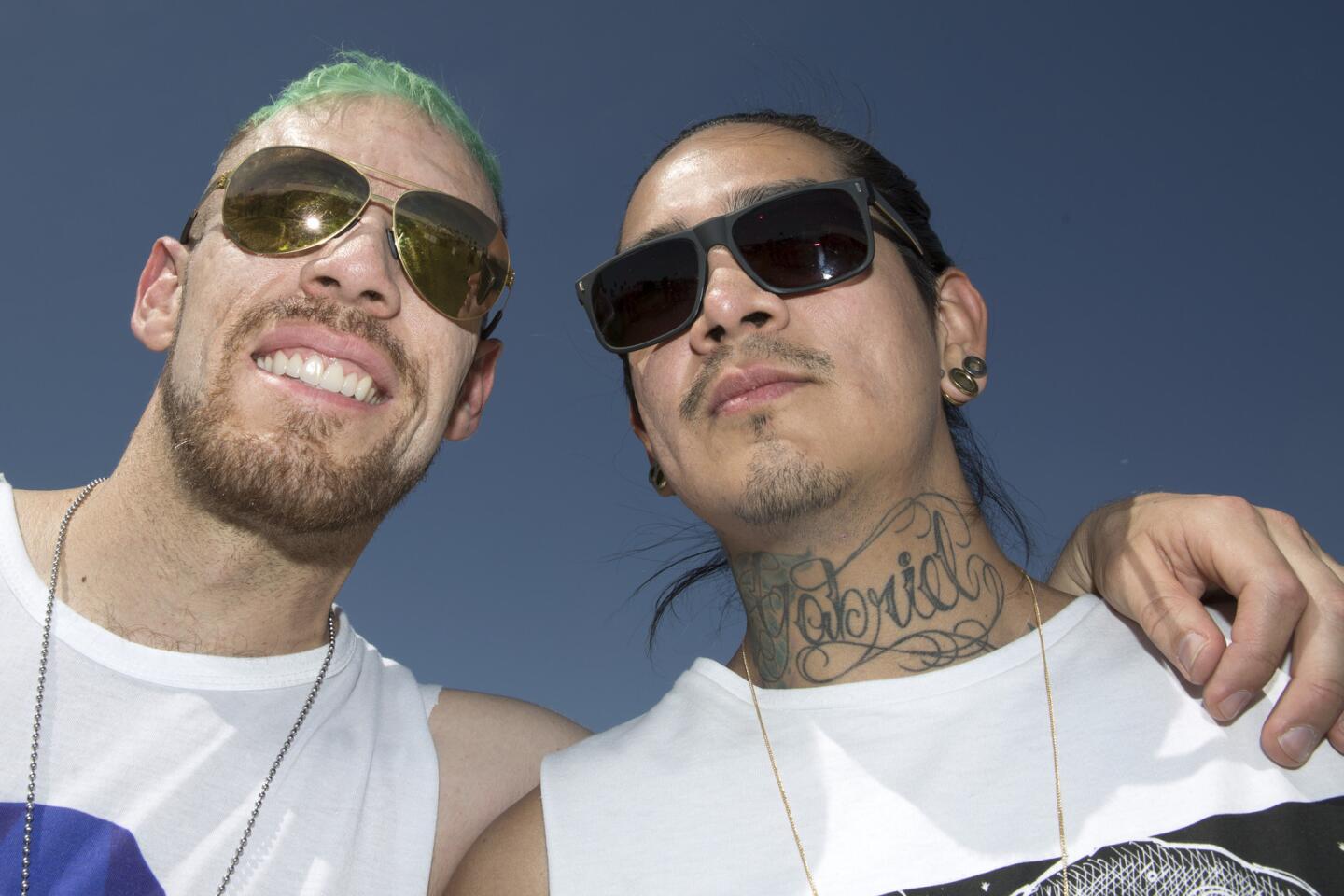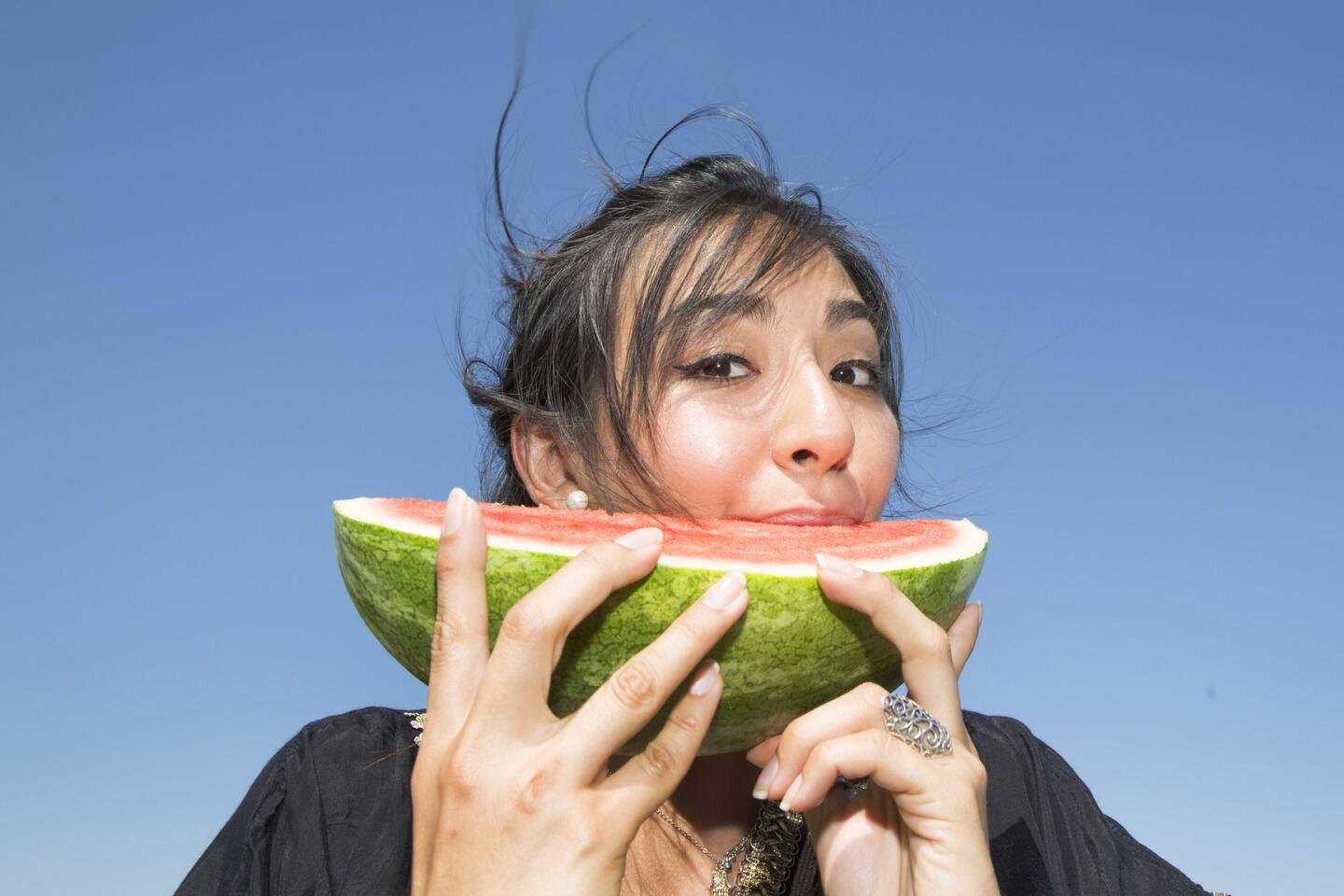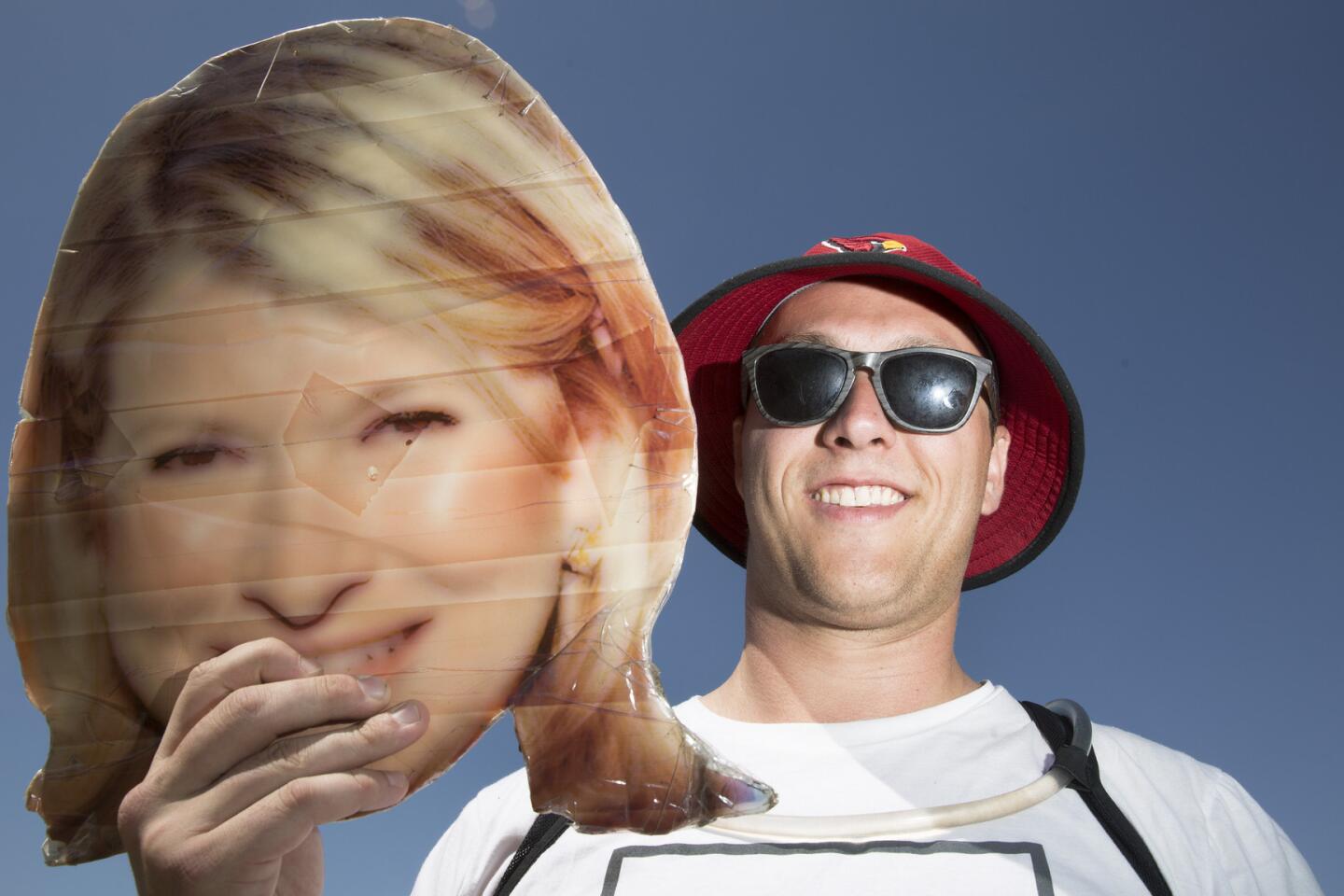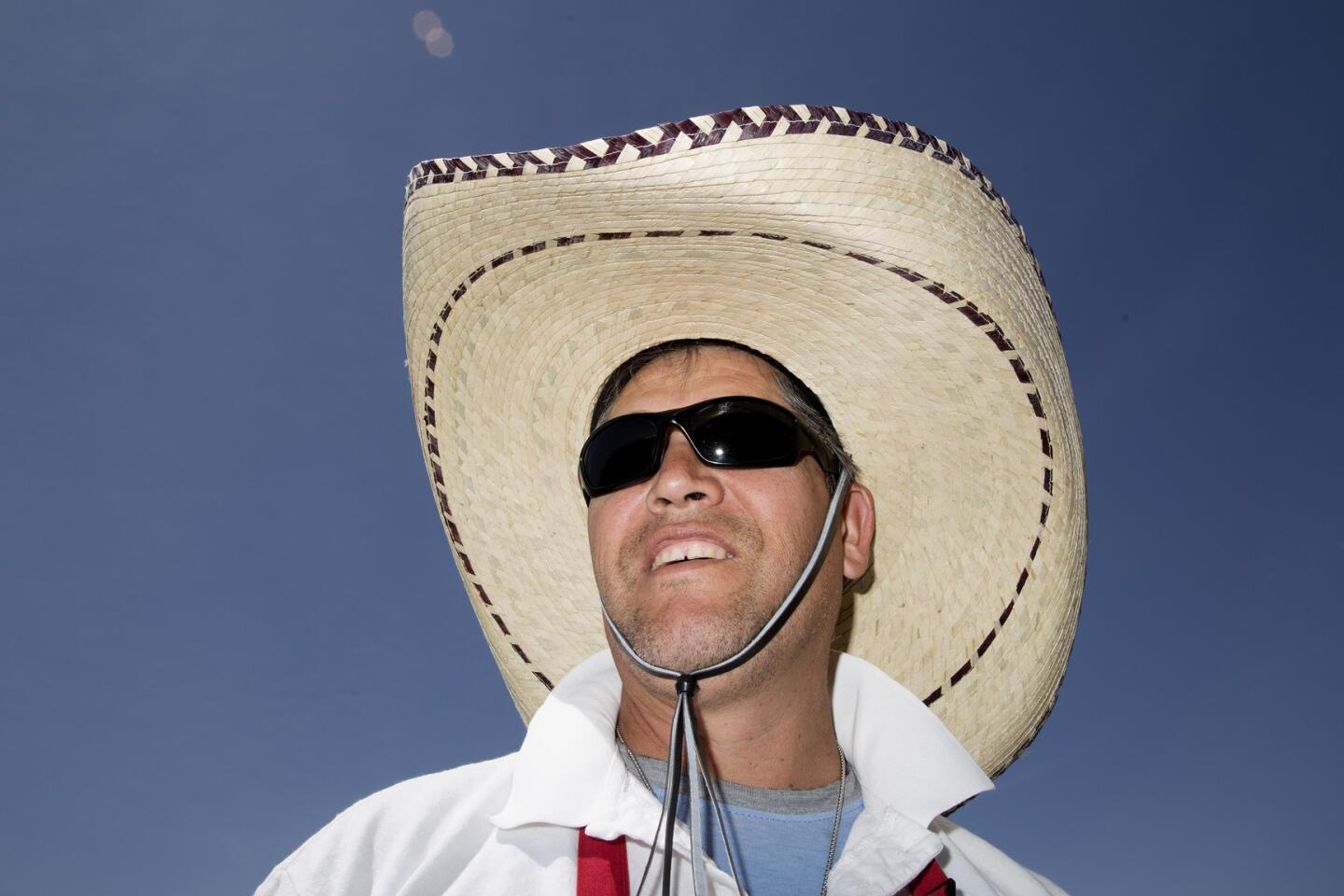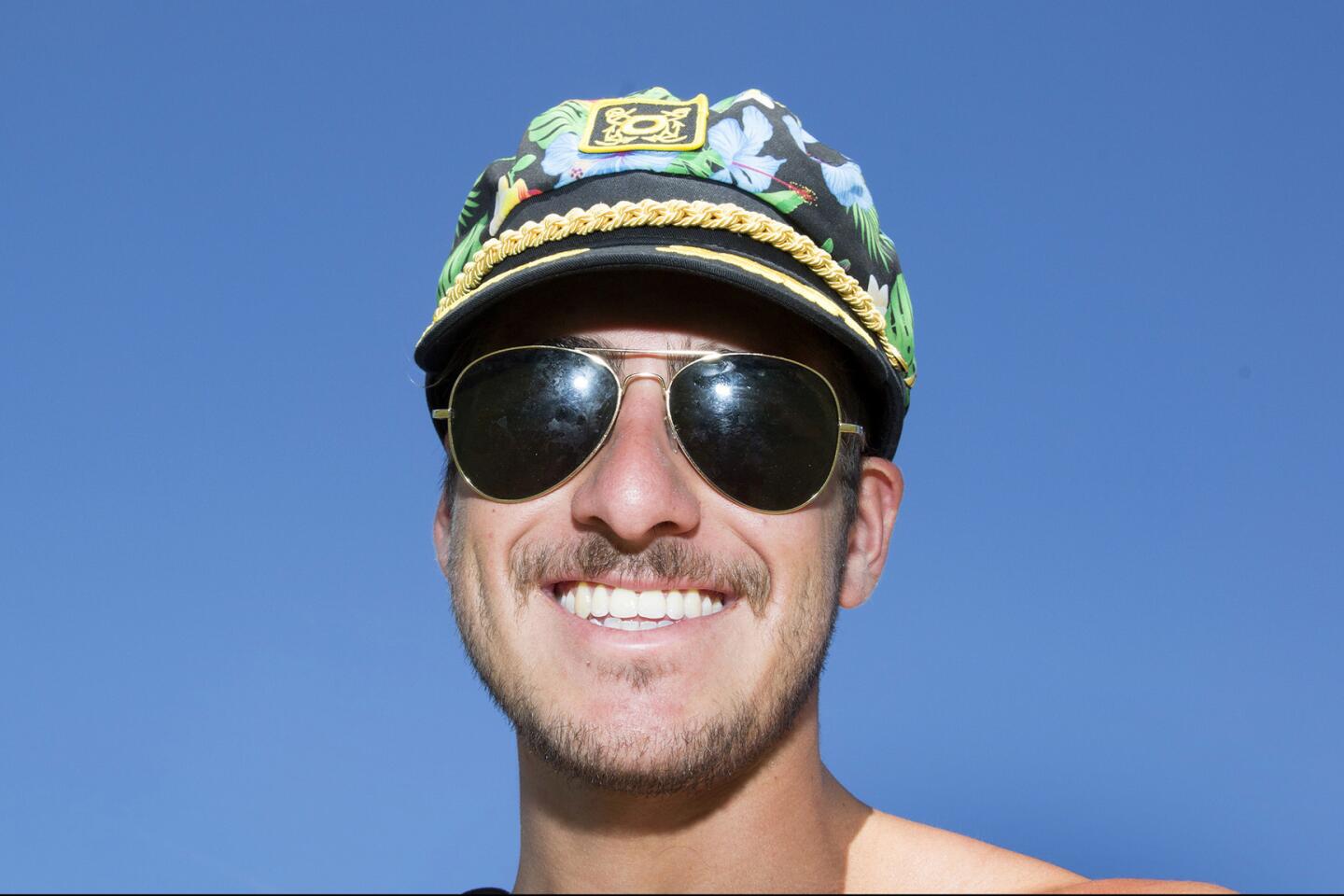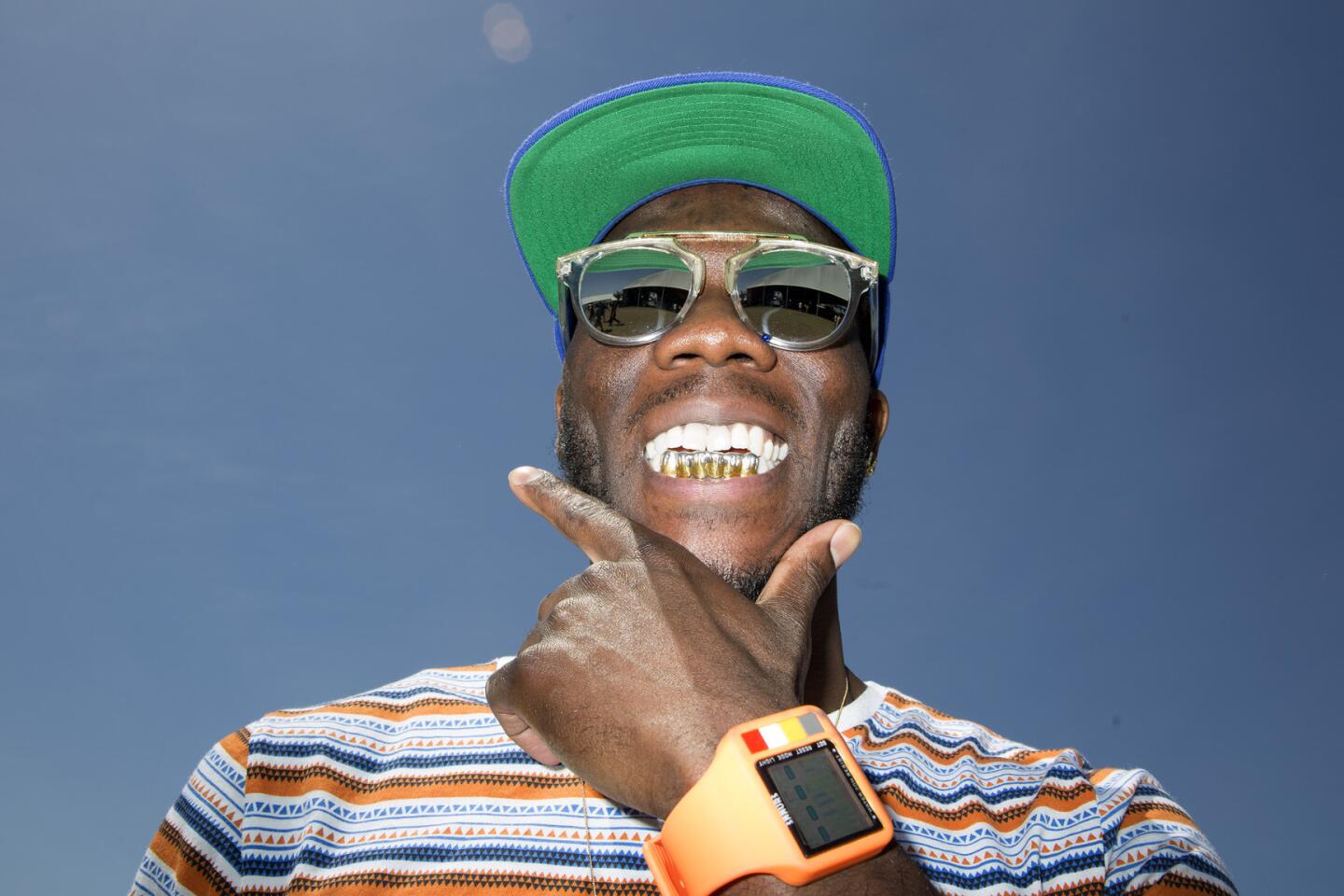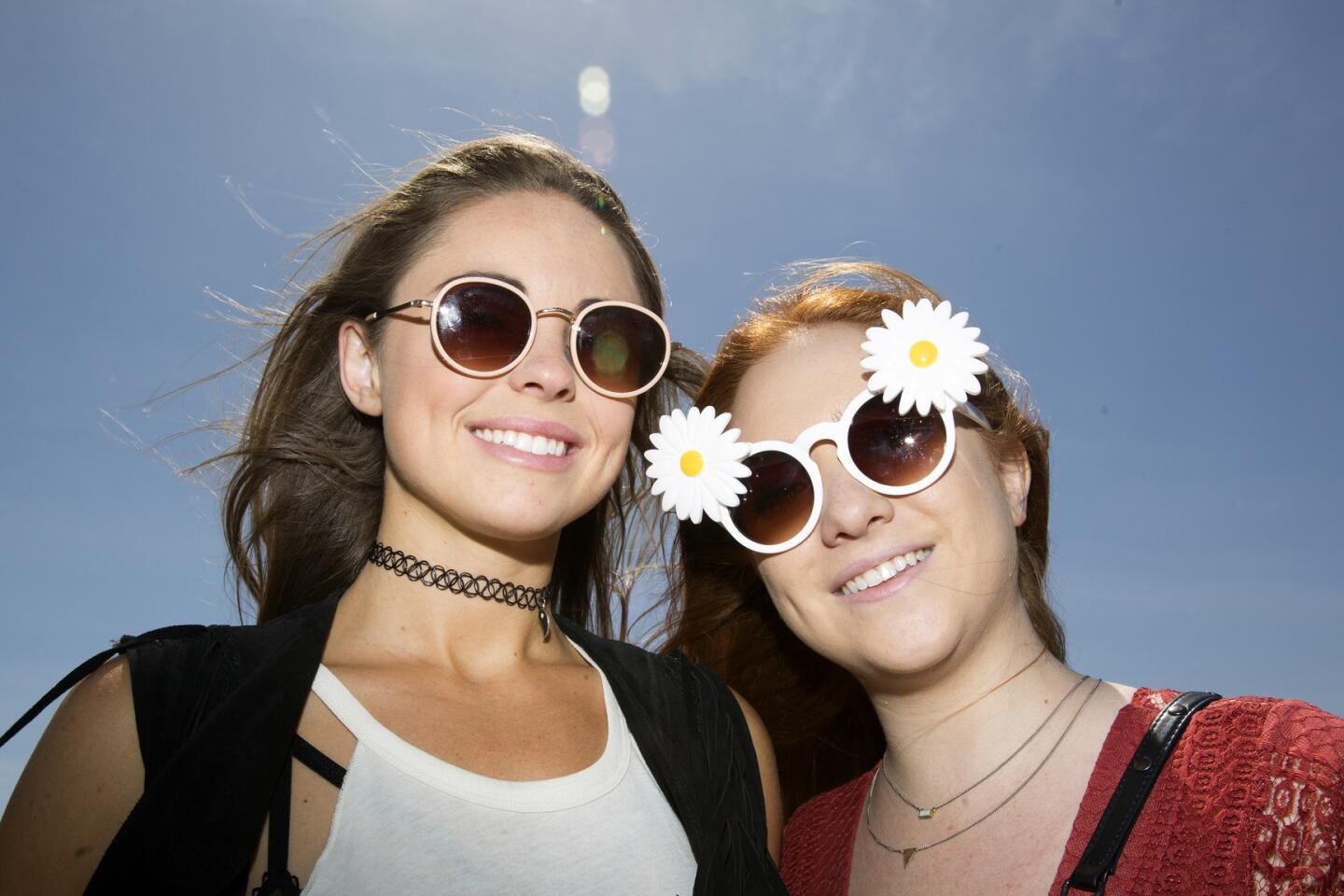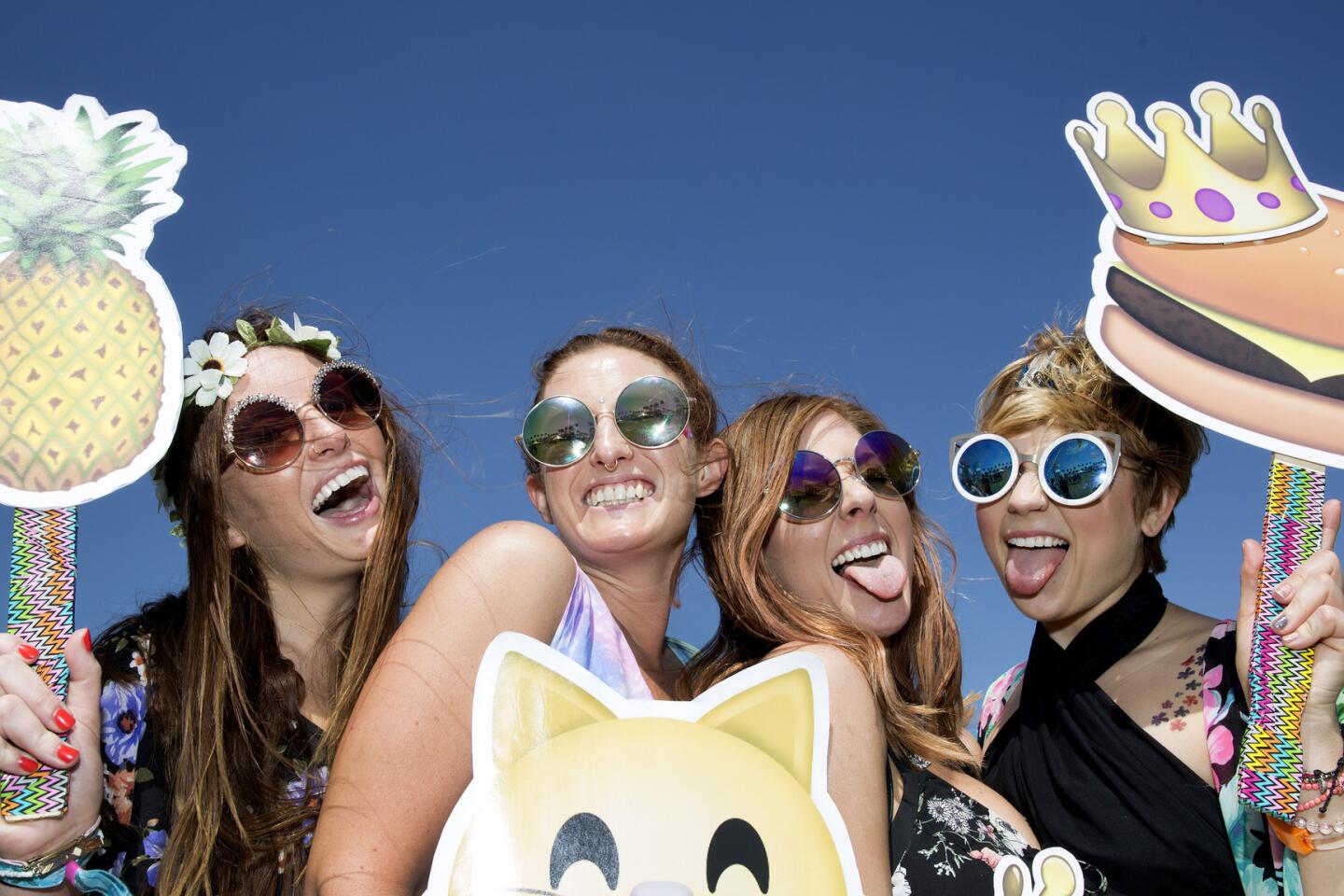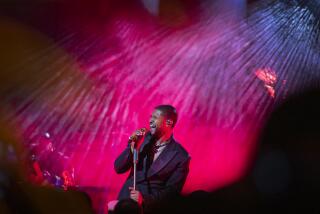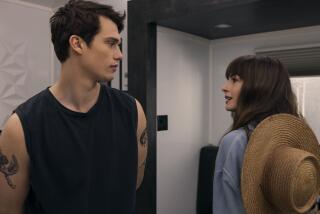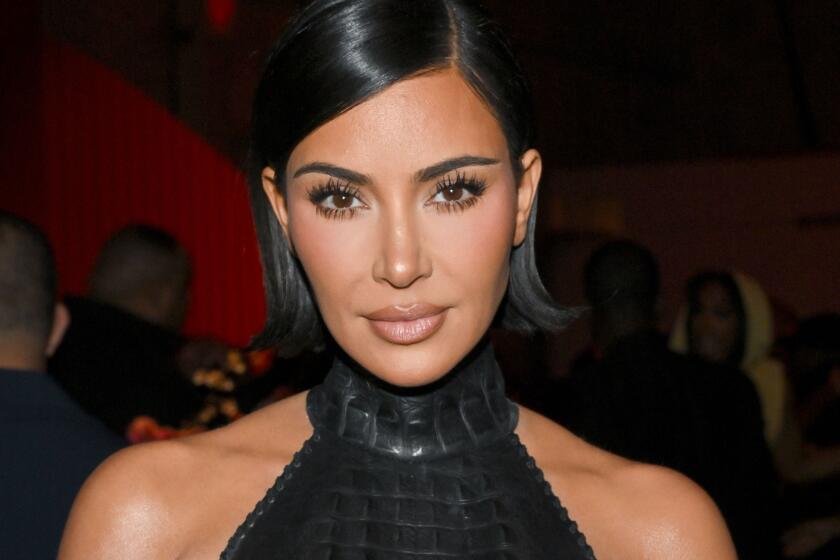At Coachella, the arts and music have an election-year topicality
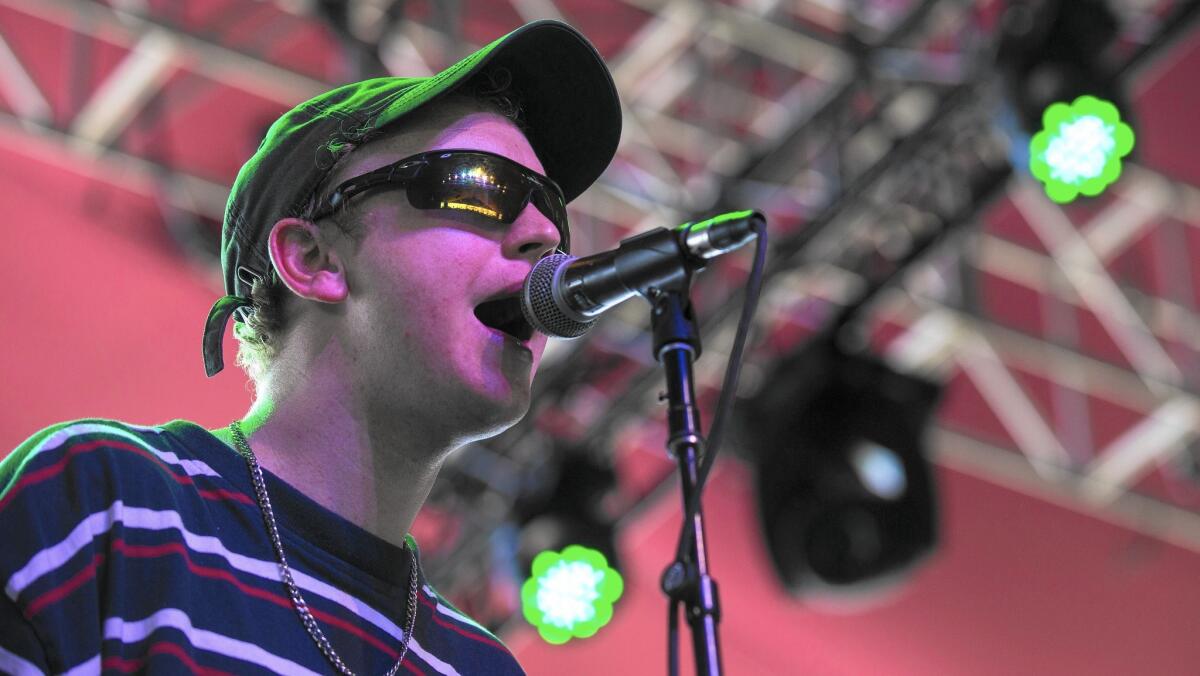
- Share via
The election year did not go unnoticed at the Coachella Valley Music and Arts Festival, but it wasn’t always the musicians on stage making the boldest statements.
Scattered among the grounds of the Empire Polo Club in the desert city of Indio were a number of large-scale installations, some of them referencing the most controversial topics in this year’s political debates.
One piece focused on the working class who have been priced out of Coachella. Another aimed to reflect on those permanently displaced by Hurricane Katrina, while R&R Studios’ “Besame Mucho” installation took aim squarely at presidential candidate Donald Trump and his calls to build a wall along the border of the United States and Mexico.
“We don’t like to punch anyone in the face, nor have anyone punch us. We like to talk to one another,” said Roberto Behar, who along with Rosario Marquardt pitched and created the piece for the Goldenvoice-produced festival.
All in all, it gave the festival, headlined by reformed hard rock act Guns N’ Roses, DJ Calvin Harris and electronic rock’s LCD Soundsystem, one of its most topical turns in its nearly 20-year history. Coachella, which launched in 1999, has typically had its mind solely on escapism — its grounds decked out with high-priced food, craft beer, a fashion boutique and even an H&M outlet.
This year, Coachella even launched a virtual reality app for mobile phones, allowing fans to explore the grounds — with an emphasis on its shops — from the comfort of their living rooms.
And past artworks have taken on a more magical bent. Picture, for instance, a giant astronaut levitating over the grounds, or a caterpillar that slowly morphs into a Technicolor butterfly.
This year, along with the artists, even some of the musicians came out swinging. Said Chicago soul maven Mavis Staples after performing the civil rights-era song “Freedom Highway,” “I’m still fighting. I’m a soldier.” Later, Jehnny Beth, leader of U.K. punk act Savages, told the crowd mid-set, “We don’t like your money. We don’t like your soul.”
The group’s songs are high-intensity questions of authority, and the band’s passion created some new converts.
“Savages,” said John Chandler, 46, of Denver, when asked who impressed him most on Friday, a day that also included a Kanye West cameo and a main-stage performance by pop star Ellie Goulding. “The raw fierceness of the band was really interesting.”
Most Coachella acts kept the mood lighter. James Murphy, the usually chatty leader of LCD Soundsystem, was all business as the band, back after a five-year hiatus, played about two hours of songs that vacillated between party anthems and melancholic, late-night comedowns. Earlier, artists such as M83 and Sufjan Stevens went after a more mellow vibe.
That often left it to Coachella’s art installations to challenge the crowd — or at least give attendees more thoughtful backdrops for their selfies.
The 130-foot-long “Besame Mucho,” for instance, took its name from Consuelo Velazquez’s early 1940s pop standard, a song that captured the panic and passion of love during wartime. “Kiss me as if this night were for the last time,” she sings in the song, which has been covered by the Beatles and Frank Sinatra, among others.
The work resembles the Hollywood sign and is visible throughout much of the Coachella campus. Its words are composed of 100,000 silk flowers, a nod, said Marquardt, to San Francisco’s flower-power era of the 1960s. With its message of peace and love, there’s no denying how it feels about those who wish to further divide the U.S. from its neighbor to the south.
“It’s a song that’s known in Latin America, but it’s completely known here,” said Marquardt, a native of Argentina. “Frank Sinatra. Nat King Cole. Everyone has sung ‘Besame Mucho.’ It’s a bridge to cross different cultures. And why not? Why can’t we kiss each other? Why do we have to separate each other?”
Similar questions were raised by Alexandre Arrechea’s 50-foot-tall “Katrina Chairs.” From a distance, the piece looks like a large-scale Ikea creation, but up close one can see that its stylish yellow chairs — a popular spot for festival-goers seeking shade — are propping up housing tenements, a reference to the countless homes lost amid the 2005 natural disaster.
Then there was “Sneaking Into the Show,” created by locals Armando Lerma and Carlos Ramirez, who collaborate as the Date Farmers. The piece, 30 feet tall and designed to look like wood-carved sculptures, depicted the would-be Coachella-goer.
In a mission statement, it was said the artists intended to show the Coachella “audience a small slice of the life only a few miles from the perfectly manicured festival grounds.”
So was the art resonating with the average Coachella attendee? Early surveys were inconclusive, as concerns on guests’ minds included the health of Guns N’ Roses frontman Axl Rose, who was to perform with a broken foot late Saturday evening, and the quality of the lineup compared with those of years past.
Coachella’s attendance is capped at 99,000 for each of its two weekends, and the bulk of the $399 general admission tickets are sold before the lineup is announced. Leslie Miranda, 24, of Los Angeles said she would think twice in the future about purchasing tickets without knowing the artists in advance, as she found the rosters at competing festivals to be more to her liking. Still, she didn’t anticipate ever really breaking from Coachella.
After all, it’s now expected, she said, for Coachella’s setting to trump its music.
So what brings her back year after year? “It’s the place,” she said.
More to Read
The biggest entertainment stories
Get our big stories about Hollywood, film, television, music, arts, culture and more right in your inbox as soon as they publish.
You may occasionally receive promotional content from the Los Angeles Times.
